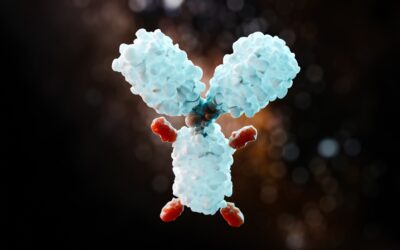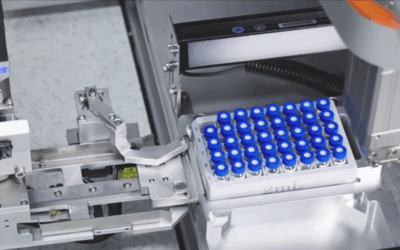Preclinical toxicology testing on new molecules is essential. Researchers use toxicity tests to identify specific adverse effects related to cancer, cardiotoxicity and skin/eye irritation and sensitization. These in vitro and in vivo studies combine with accidental exposure data to help researchers understand how a compound might impact a specific biological system. This information helps calculate a “No Observed Adverse Effect Level” (NOAEL) and allows developers to prepare their Investigational New Drug (IND) application.
The end goal of these efforts is to develop the safest drugs possible. To that end, WuXi AppTec experts weighed in on some of the most common questions about preclinical toxicology and successful IND applications.
1. A successful IND application includes various toxicology, DMPK and bioanalysis data. From a toxicology perspective, what does a successful application include?
WuXi AppTec: A successful application requires a realistic development program and timeline to meet goals and milestones. It’s equally important to de-risk your program, as early as possible, by identifying safety issues that could derail it.
For instance, if you are developing a small molecule for a non-oncology indication, you’ll need to gather genotoxicity data. High-throughput screening assays aren’t always as effective as full-scale regulatory ones, and positive or “equivocal” genotoxicity results can stop a program cold. Bad toxicity data never goes away, and it can require additional testing as molecules move through development. So, it’s essential to get it right.
Also, remember that nonclinical safety strategies differ for small molecule and biologic therapies. Small-molecule nonclinical safety programs require general toxicology studies—one of which must include a rodent. It would help if you had dose range-finding studies to support dose selection for non-GLP and GLP definitive studies. And you need in vitro mutagenicity and cytogenetic studies to determine genotoxicity.
Small molecules can often have off-target effects or toxicities that can form one or more metabolites in vivo, which may or may not be relevant to human risk. So, you’ll need to conduct studies around safety pharmacology, reproductive and developmental toxicity and carcinogenicity. If your product is destined for dermal or mucosal regions, you’ll also need irritation and sensitization studies.
There is much data and many variables to monitor to ensure safety. That’s why it’s critical to enlist the help of an experienced toxicologist, if you don’t already have one in-house.
2. When should developers begin planning their preclinical toxicology program? Where should they start, and what are timelines like?
WuXi AppTec: Begin your preclinical toxicology program before or at the same time that you select drug candidates. It can take about a month from beginning in-house discovery to selecting the candidate. Analytical development then begins to discover the stability of the compound during biological and chemical analysis.
Toxicology studies should also include single-dose, repeated-dose, reproductive, developmental toxicity and genotoxicity studies. Additional studies like immunotoxicity and local tolerance studies may also be required to enable initial human trials.
It can take up to a year to promote a drug candidate and conduct CMC (chemistry, manufacturing & controls), pharmacokinetics and toxicology testing. It’s critical to adhere to your timeline strictly, but you also must not skimp on details. Comprehensive information improves the likelihood of U.S. FDA approval. Be sure to disclose all the substances present in the manufacturing process and describe the production methods to improve the quality of your IND submission.
Ultimately, each preclinical toxicology program is different and timelines can vary. The amount of time needed depends on the clinical indication and the routes that must be supported. Timing also depends on the molecule; preclinical toxicology programs are unique to each molecule and category. Whether you’re talking about small or large molecules, gene therapy, or the progression of safety studies, timing is dictated entirely by the clinical program.
3. What are some common missteps when an IND application is on ‘clinical hold’?
WuXi AppTec: A pre-IND meeting is essential to address any issues related to data the U.S. FDA needs to support your rationale for testing a drug in humans. Regulators want to see data-driven evidence that proves your product is ready for clinical trials. Partial or missing information at this stage is a non-starter.
Be sure you can discuss the nonclinical pharmacology, toxicology, and drug activity study design with regulators before submitting your IND application. Also, determine pharmacologically relevant animal models and data requirements before submission. And try to avoid missteps, such as failing to cover the pharmacodynamics and safety pharmacology. Remember that absorption, distribution, metabolism, excretion (ADME) and radio-labeled mass balance studies may also be needed. Failure to include this type of pertinent information can lead to the U.S. FDA rejecting your IND application.
4. Species selection is critical when planning a preclinical toxicology program. What advice do you have for developers in this stage?
WuXi AppTec: It is critical to select pharmacologically relevant species. Depending on the molecules or diseases, species selection can be difficult. The patient population and conditions of use (as it relates to reproductive potential and severity of disease), the formulation of the drug, and routes of administration intended for humans are all taken into account for species selection.
Include all relevant data related to toxicity from in-vitro, ex-vivo and nonmammalian studies and structure-activity relationships. Data should include pharmacodynamic, pharmacokinetics and pharmacological similarity to other pharmaceuticals. Be sure to consider aspects of the general biology of the pharmaceutical target and the known roles of the target.
5. What important attributes should a drug developer consider when selecting a laboratory testing partner?
WuXi AppTec: A laboratory testing partner will be most successful, if they’re a good fit across the board. Sponsors should choose a partner that can fulfill all their testing needs (e.g. bioanalysis, toxicology or DMPK) in-house and that has a proven track-record for quality, accuracy or detail.
It’s essential to select a full-service testing partner with an integrated communication management approach. Video chat capabilities, regular reporting and using SEND data packages to compile relevant information in the format regulators prefer is crucial. Integrated communication can save you time and reduce miscommunication when transferring documents between departments and testing sites.
On the topic of regulators, make sure the partner you’re considering has a strong reputation and collaborative relationship with regulatory bodies. They should also undergo frequent government inspections. You can inquire about recent inspections and request results. Laboratory testing compliance with regulatory standards should be non-negotiable.
For sponsors who may eventually prepare an IND application, our blog post can help make sure it corresponds with the proper regulatory guidance: “Regulatory Pathways: IND Requirement Variations Between U.S. FDA, OECD and NMPA.”
As a global company with operations across Asia, Europe, and North America, WuXi AppTec provides a broad portfolio of R&D and manufacturing services that enable the global pharmaceutical and life sciences industry to advance discoveries and deliver groundbreaking treatments to patients. Through its unique business models, WuXi AppTec’s integrated, end-to-end services include chemistry drug CRDMO (Contract Research, Development and Manufacturing Organization), biology discovery, preclinical testing and clinical research services, helping customers improve the productivity of advancing healthcare products through cost-effective and efficient solutions. WuXi AppTec received an AA ESG rating from MSCI for the fourth consecutive year in 2024 and its open-access platform is enabling around 6,000 customers from over 30 countries to improve the health of those in need – and to realize the vision that “every drug can be made and every disease can be treated.”


